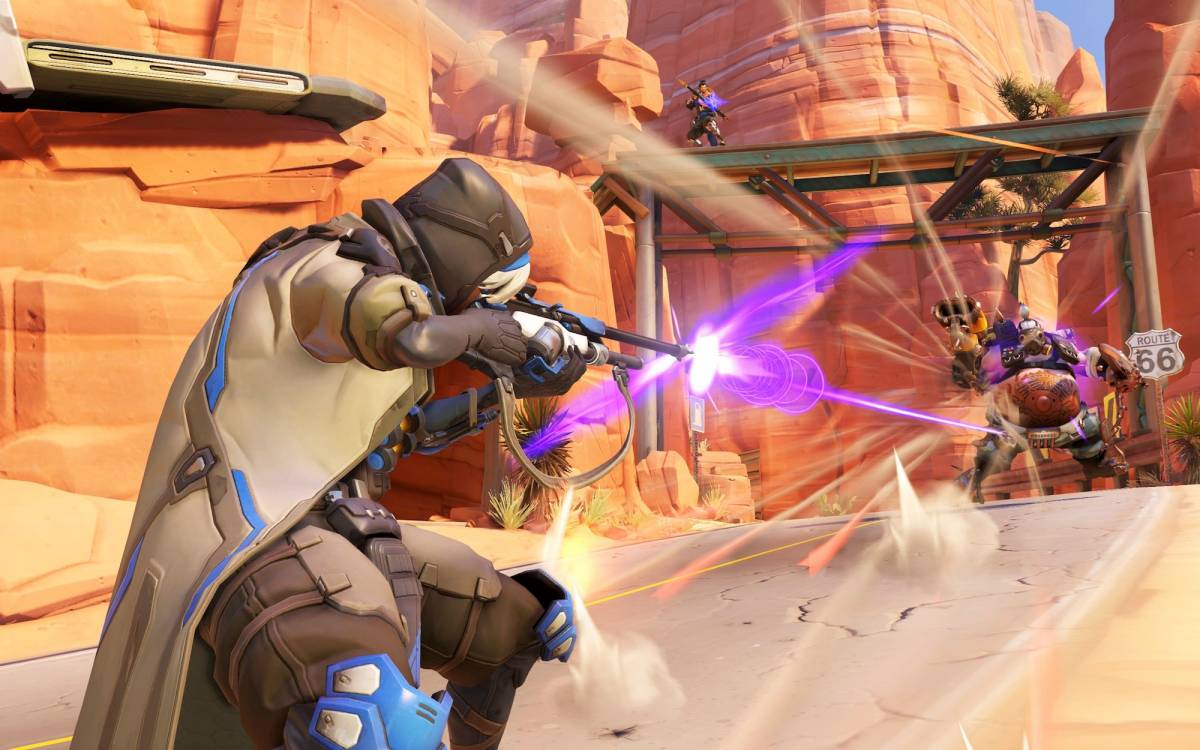Back at the start of September, Blizzard introduced a second season of competitive play to their multiplayer team-based shooter, Overwatch. With the update came a whole host of tweaks to the competitive mode and its mechanics; such as an increase in the number of possible skill rankings, and the removal of a universally hated feature: the coin-flip. But, after playing the mode for a considerable amount of time, I thought I’d pose a simple question: How is it?
Well, it’s pretty great as it turns out. The main change I was interested in was the altering of the skill rankings to vary from the previous 1-100, to a much broader 1-5,000. With this increase came a set of seven brackets that players fell under based upon their skill throughout matches, and they could naturally go up or down depending on how they performed. For example, after undertaking my mandatory ten preliminary ranked games, I was awarded a skill ranking of 2,340. This meant that I fell under the ‘Gold’ bracket, and could graduate to ‘Platinum’ if I managed to scale to 2,500.

How this manages to feel better than the previous system is in its ability to make players feel like they’re making meaningful progress with each game. Previously, you would move mere increments within a number, and reaching the high tiers was seemingly impossible due to your ranking falling quicker than it rose. Because of this, it was reported by Overwatch’s game director, Jeff Kaplan, that if you had a ranking of 60 then you were in the top 6% of players worldwide. The new system allows for players to move in larger increments than before, which makes games actually feel worthwhile.
This also makes it clearer to see who you’re on a similar level with when playing ranked. Rather than everybody hovering around the 40s and 50s for their skill level, you’ll now see that you’re fighting alongside ‘Gold’ players, and perhaps even some ‘Platinum’ ones. Despite many more figures now coming into play, these emblems make the visual representation of progress appear simpler – and more gratifying – than before.
My only complaint when it comes to the new emblems and brackets system would be in the accessibility to finding out your own ranking. By delving into your profile page, you can see what skill level you are, but the emblem associated with this is only displayed with a small icon below. In order to decipher which bracket I fell under, I then had to go into the information screen for Season 2 on the main menu, and compare which of the similarly coloured emblems my own resembled. It’d be a quick fix to place this example chart alongside your own ranking, but one which would make it easier for those new to the system to immediately understand where they sit.
Another key change brought about with Season 2 that I mentioned earlier is the removal of the coin-flip to decide who will attack and defend if the game comes to a sudden-death. This was infuriating to players, because it felt like it removed an incentive for skill, and replaced it with sheer luck deciding the outcome of the game. Now, more priority has been put onto the time-bank system within ranked play, which allows a team who completes the objectives quickly to carry over the time they saved into the next round. What this does mean is that games will sometimes end in a draw, which is unsatisfying, but necessary if the coin-toss is to remain absent.

A way in which the coin-toss removal and the increase of games ending in a draw has been combated is by multiplying the number of competitive points earned per game. Previously, you could get 1 point for winning a game, and once you’d accrued 300, a special golden skin for your weapon could be purchased. Now, the number of points has been multiplied by 10, so you’ll get 10 points for a victory, but the amount needed for a skin is 3,000. This is to allow players who end their game in a draw to still gather a bundle of points towards the skins, but it feels a little bit pointless. Personally, I had no problem with the previous system of 1 point for a win, and this new adjustment seems a bit redundant amongst the other noteworthy changes. I suppose I can hardly criticise a change that doesn’t inherently damage the overall experience, and maybe it was an issue for some players; me personally, though? No, I didn’t see a problem.
These are of course only a few of the changes that arrived with Season 2, but they’re the key ones that I felt impacted the gameplay. Overall, I’d say that Blizzard have done a great job of making ranked play much more appealing to new players, and this is primarily due to the adjustments made to the ranking tier system. There’s a few tweaks I’d still like to see, which I’ve detailed here, but I can’t fault Blizzard for this; it managed to make an already enjoyable game even better.
Buy Overwatch on PS4, Xbox One
, or PC
Some of the coverage you find on Cultured Vultures contains affiliate links, which provide us with small commissions based on purchases made from visiting our site. We cover gaming news, movie reviews, wrestling and much more.



